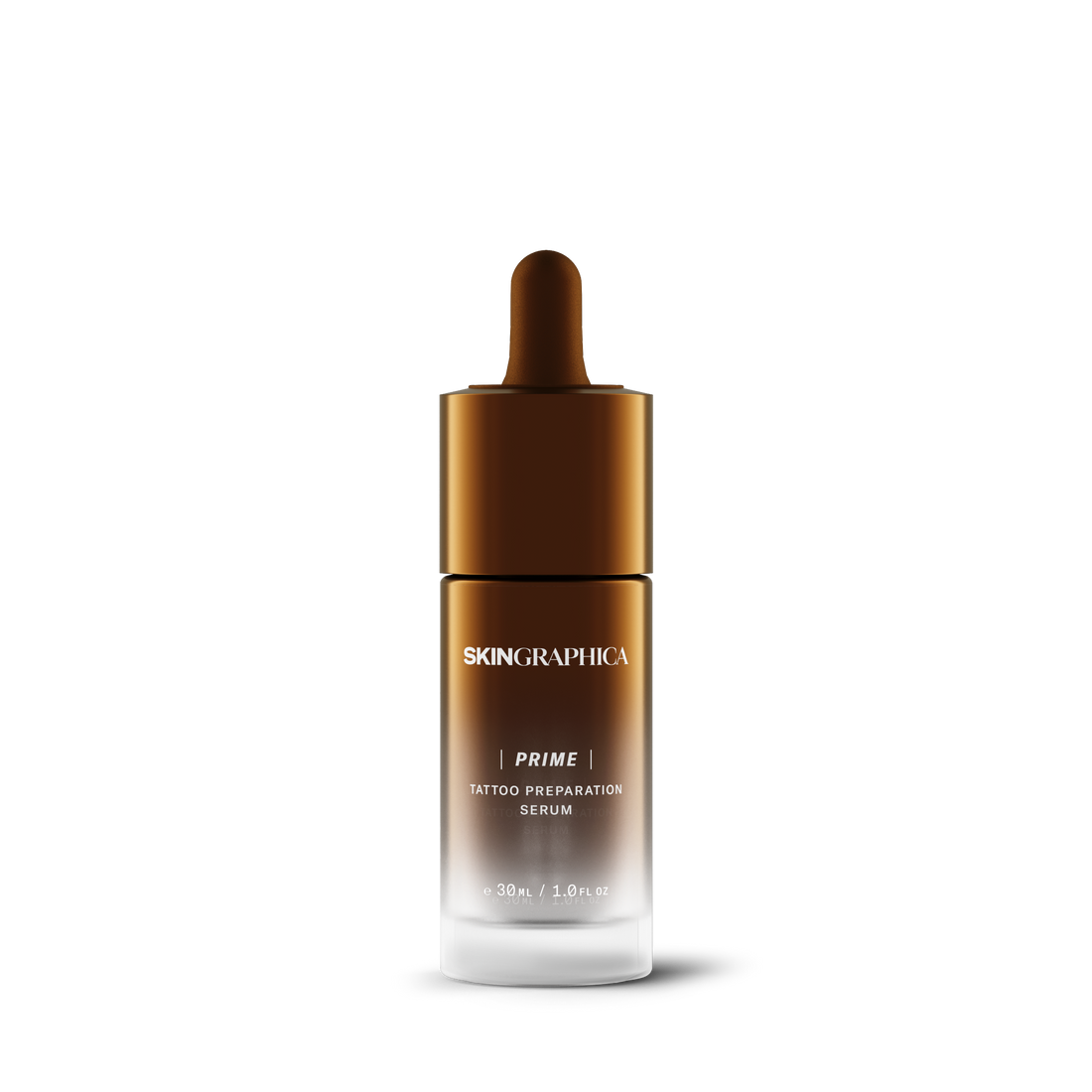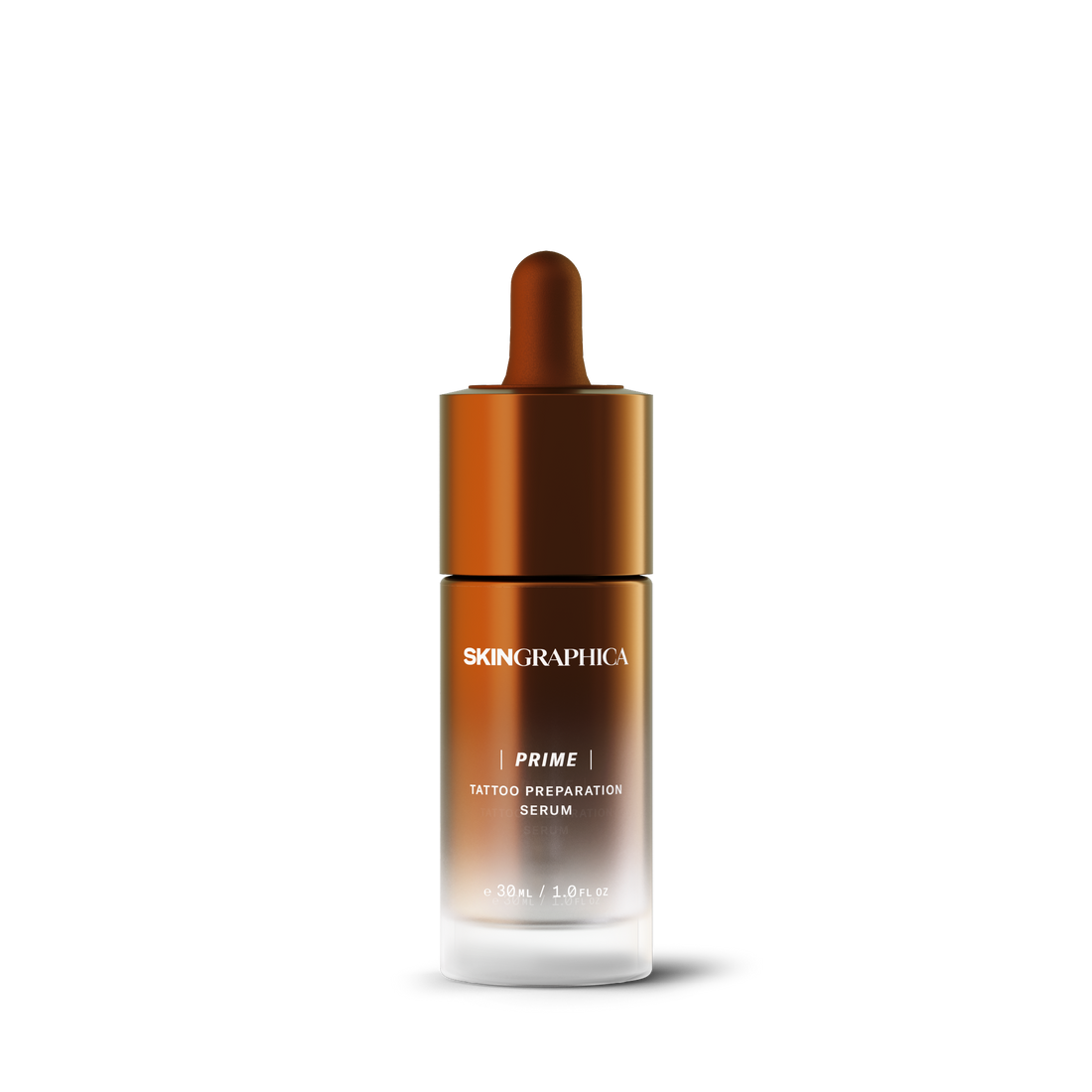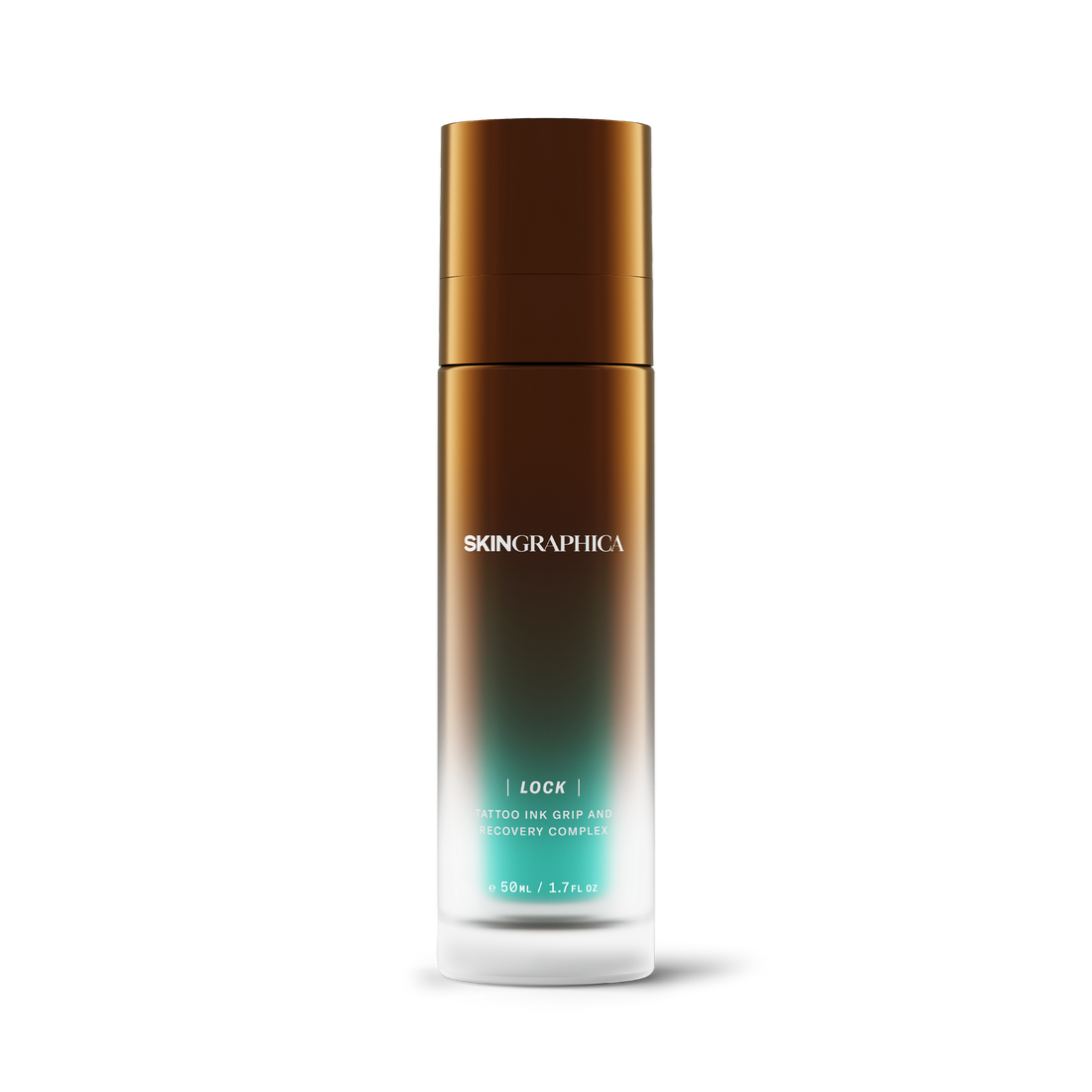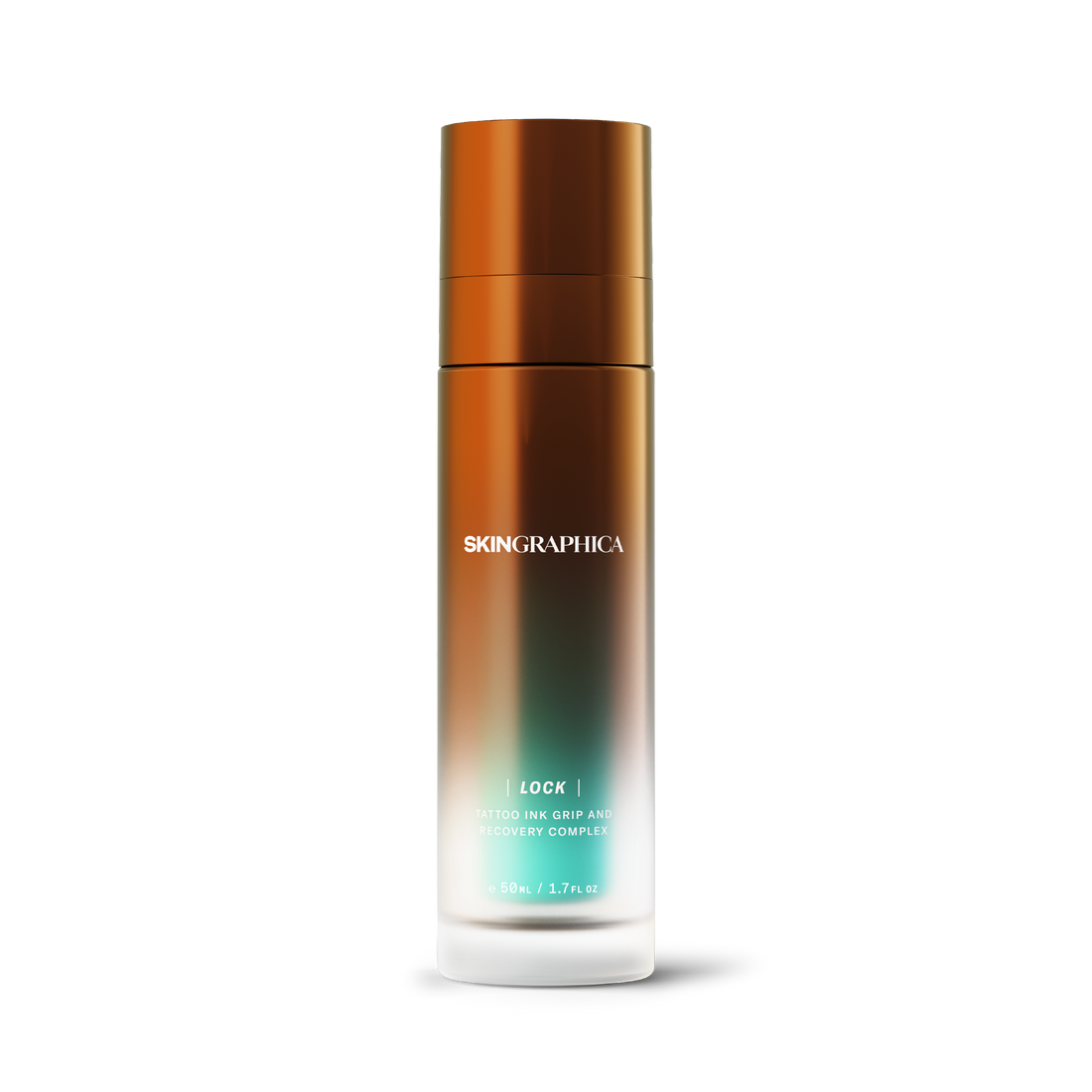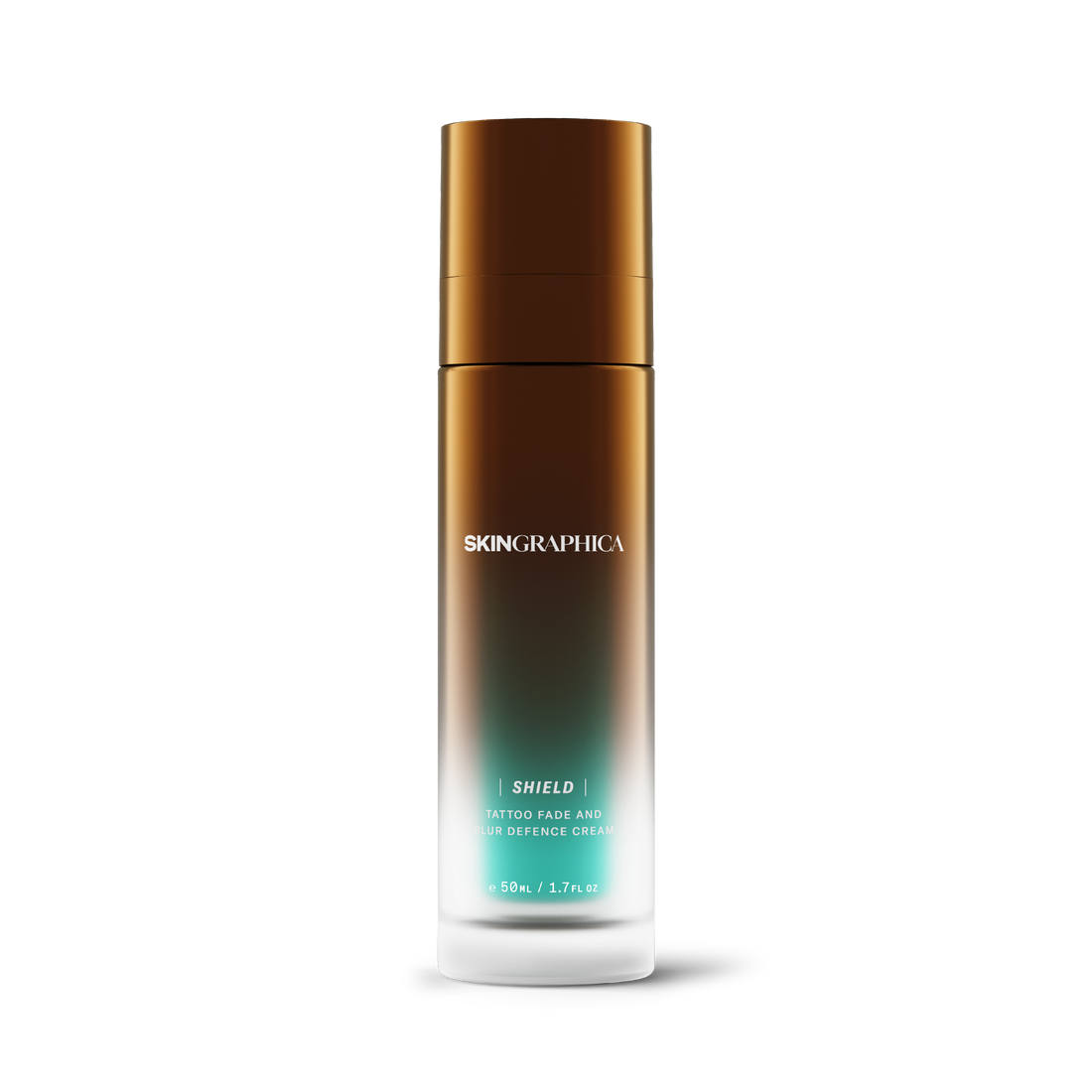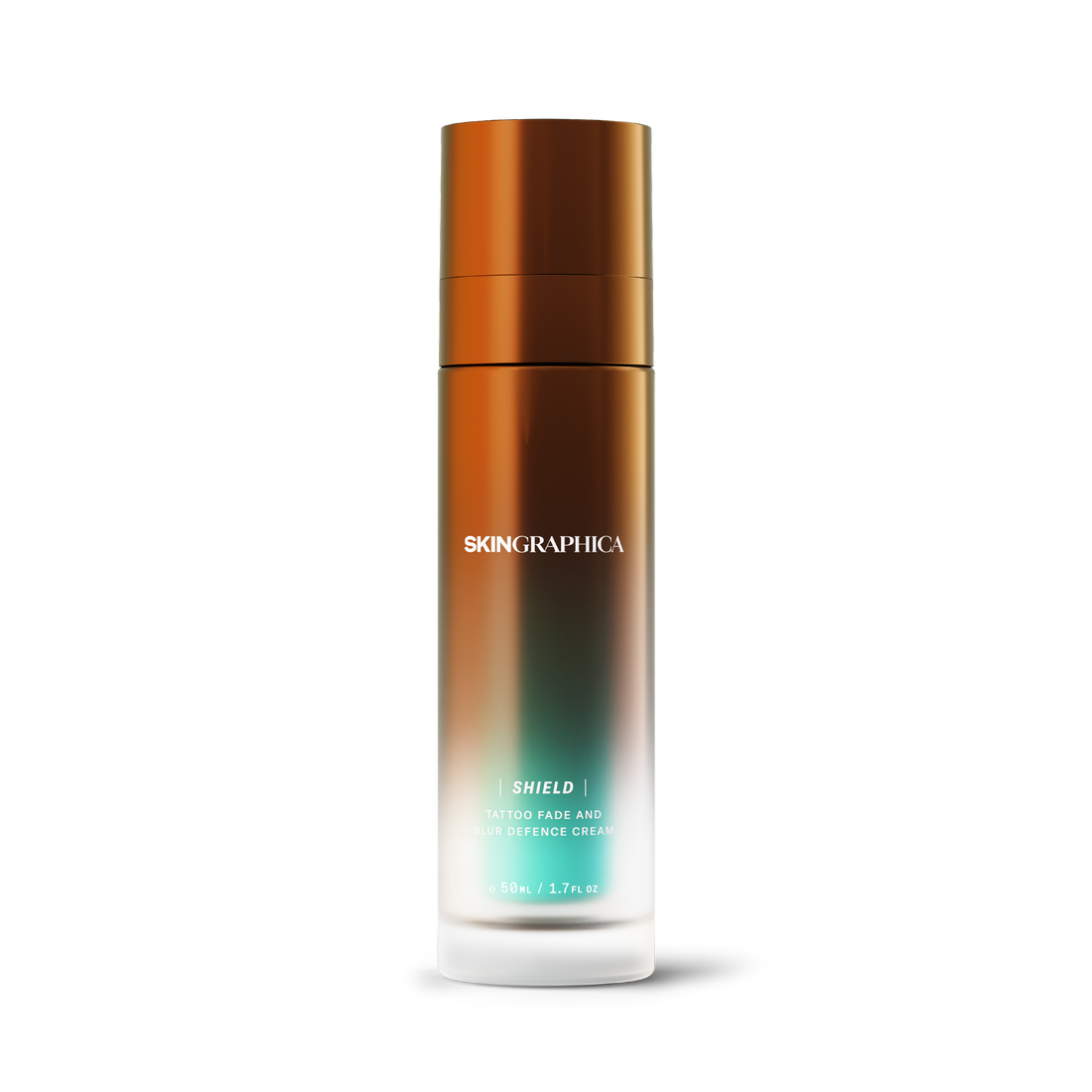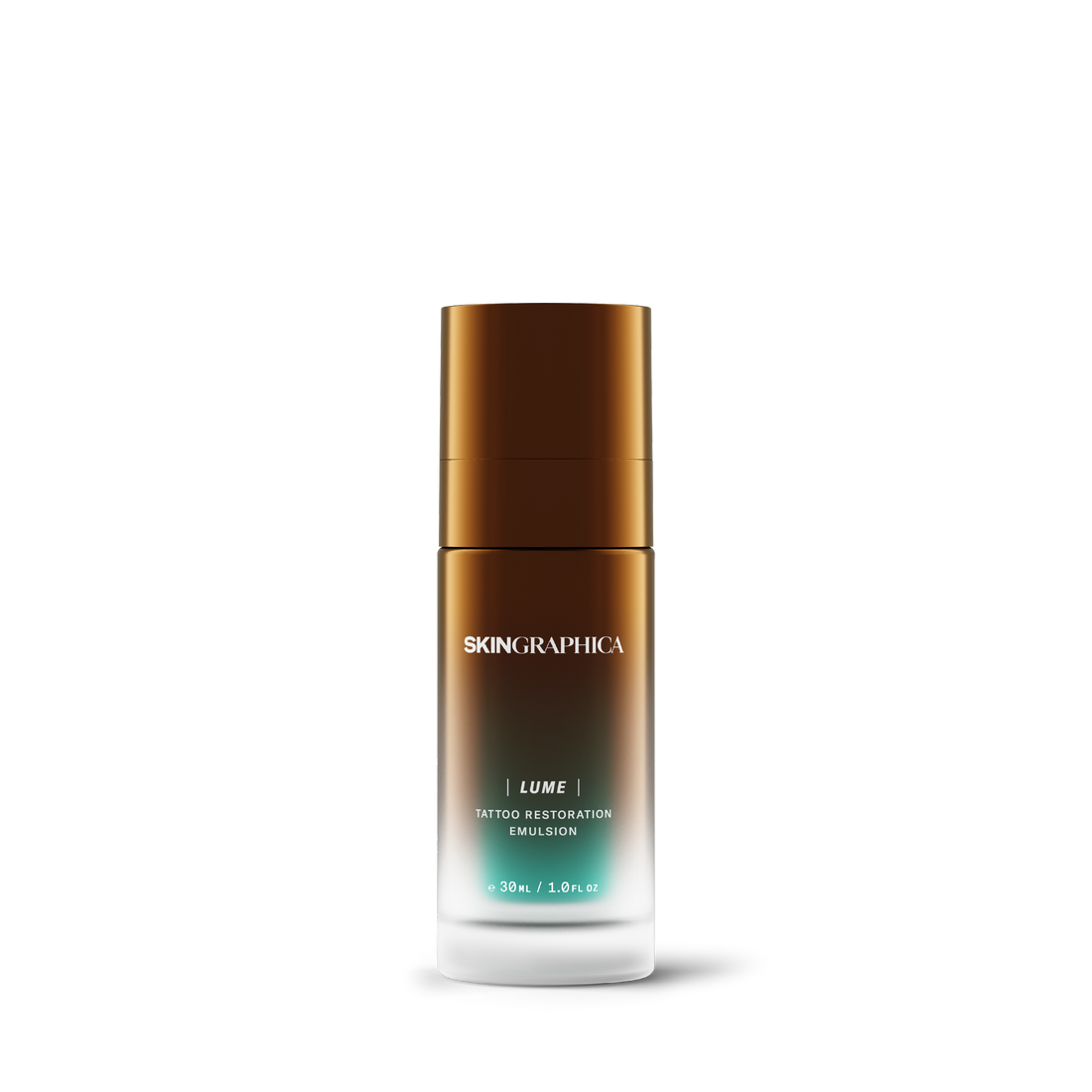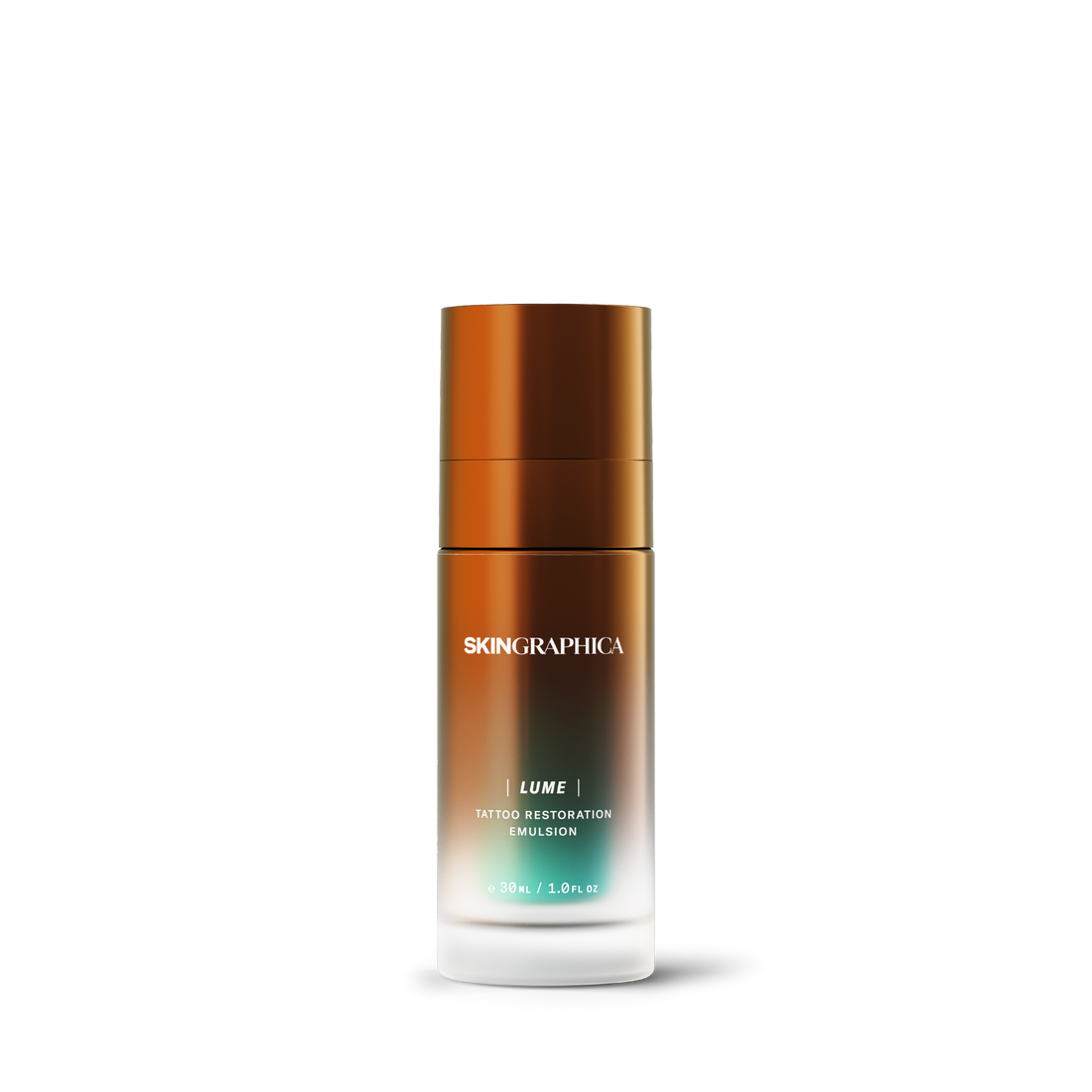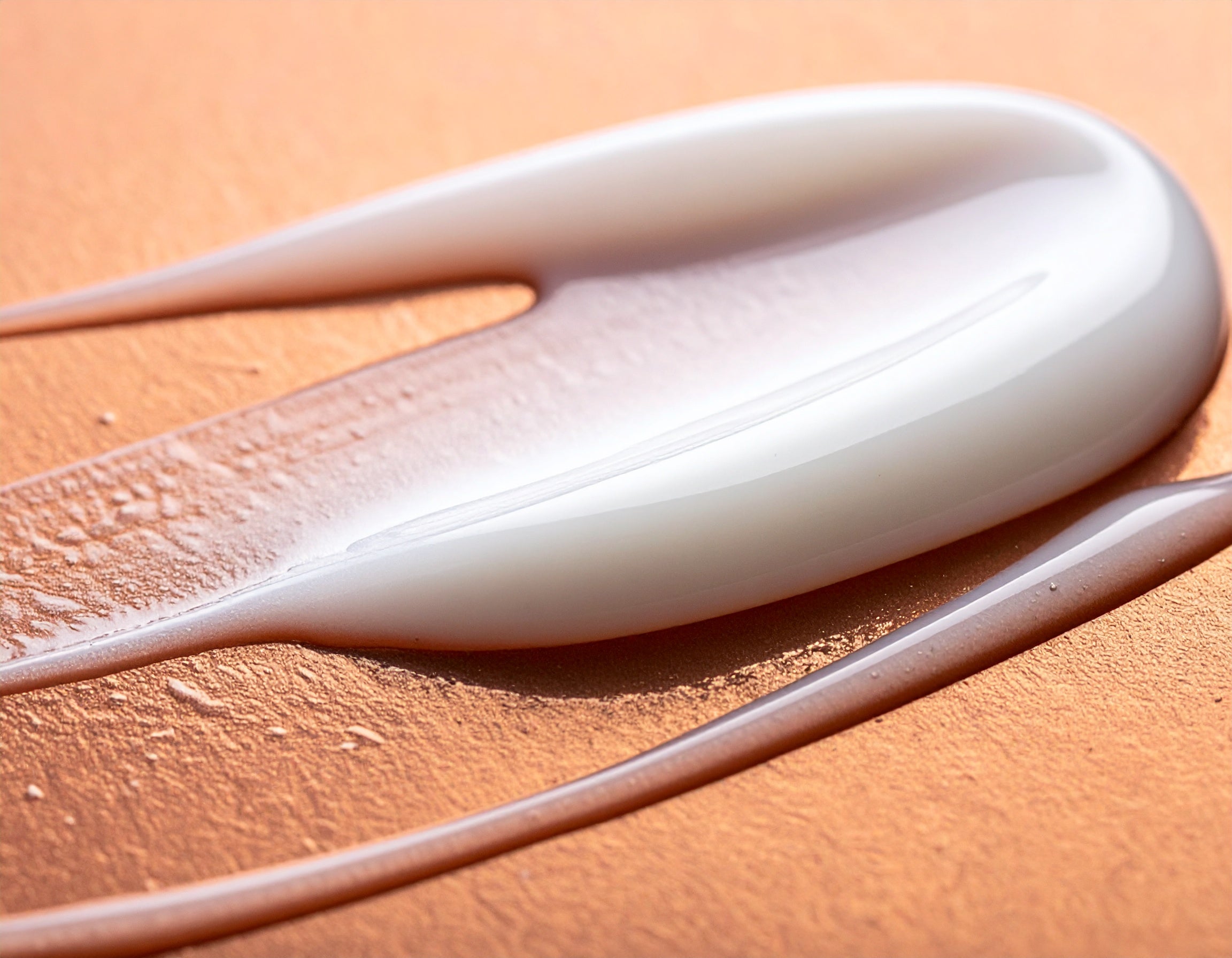
The Quick Tattoo Care Guide.
by SKINGRAPHICA
-
Tattoos are one of the oldest forms of human self-expression, ink etched into living skin. Unlike a canvas or sculpture, your tattoo exists on tissue that heals, renews, and responds to everything you do. That makes tattoo care a lifelong responsibility.
-
Tattoos are one of the oldest forms of human self-expression, ink etched into living skin. Unlike a canvas or sculpture, your tattoo exists on tissue that heals, renews, and responds to everything you do. That makes tattoo care a lifelong responsibility. Yet despite tattooing being thousands of years old, reliable, science-based guidance on how to care for tattoos is surprisingly rare. Myths, half-truths, and old wives’ tales dominate the conversation, from smearing petroleum jelly to “letting it dry out”, advice that often does more harm than good.
SKINGRAPHICA created this guide to set the record straight. It is not medical advice (always follow your artist’s instructions and consult a medical professional if your tattoo looks infected, irritated, or is not healing properly). Instead, it is the most comprehensive, science-backed overview of tattoo care available, designed to help you prepare, heal, protect, and restore your art for a lifetime.
The Basics
When you get tattooed, a machine punctures your skin thousands of times per minute, depositing pigment into the dermis (the second layer of skin). Unlike the epidermis, which sheds naturally, the dermis is more stable, holding ink particles in place for years.
But the skin is not static. It renews, repairs, and reacts to its environment. Sun, ageing, friction, and poor aftercare all affect how ink looks over time. That’s why tattoo care is not a two-week process, it’s a lifetime practice.
STAGE 01
Prepare
Before Your Tattoo
-
What Happens
Before the needle touches your skin, the condition of your skin determines how well it will take ink. Hydrated, resilient skin is easier to tattoo, absorbs pigment evenly, and heals better. Dry, irritated, or sun-damaged skin makes tattooing harder and compromises results.
-
How to Prepare
Hydrate.
Drink water regularly in the week leading up to your session.Moisturise Smartly.
Keep skin nourished, but avoid heavy, oily creams right before your session.Avoid Damage.
Stay out of the sun and skip tanning, peels, or harsh exfoliants.Skip the Booze.
Avoid alcohol and excess caffeine 24 hours before — both thin the blood.Eat Well.
Have a balanced meal before your appointment to keep energy and blood sugar stable.Rest Up.
Good sleep helps your skin (and pain tolerance) perform at its best.
-
Common Mistakes
- Arriving sunburnt or tanned.
- Drinking alcohol “for courage.”
- Turning up dehydrated, hungry, or exhausted.
- Overloading skin with heavy lotions on the day of tattooing.
-
Expert Advice
Think of preparation like prepping a canvas. Strong, healthy skin makes the difference between crisp, lasting ink and a tattoo that looks patchy or fades quickly.
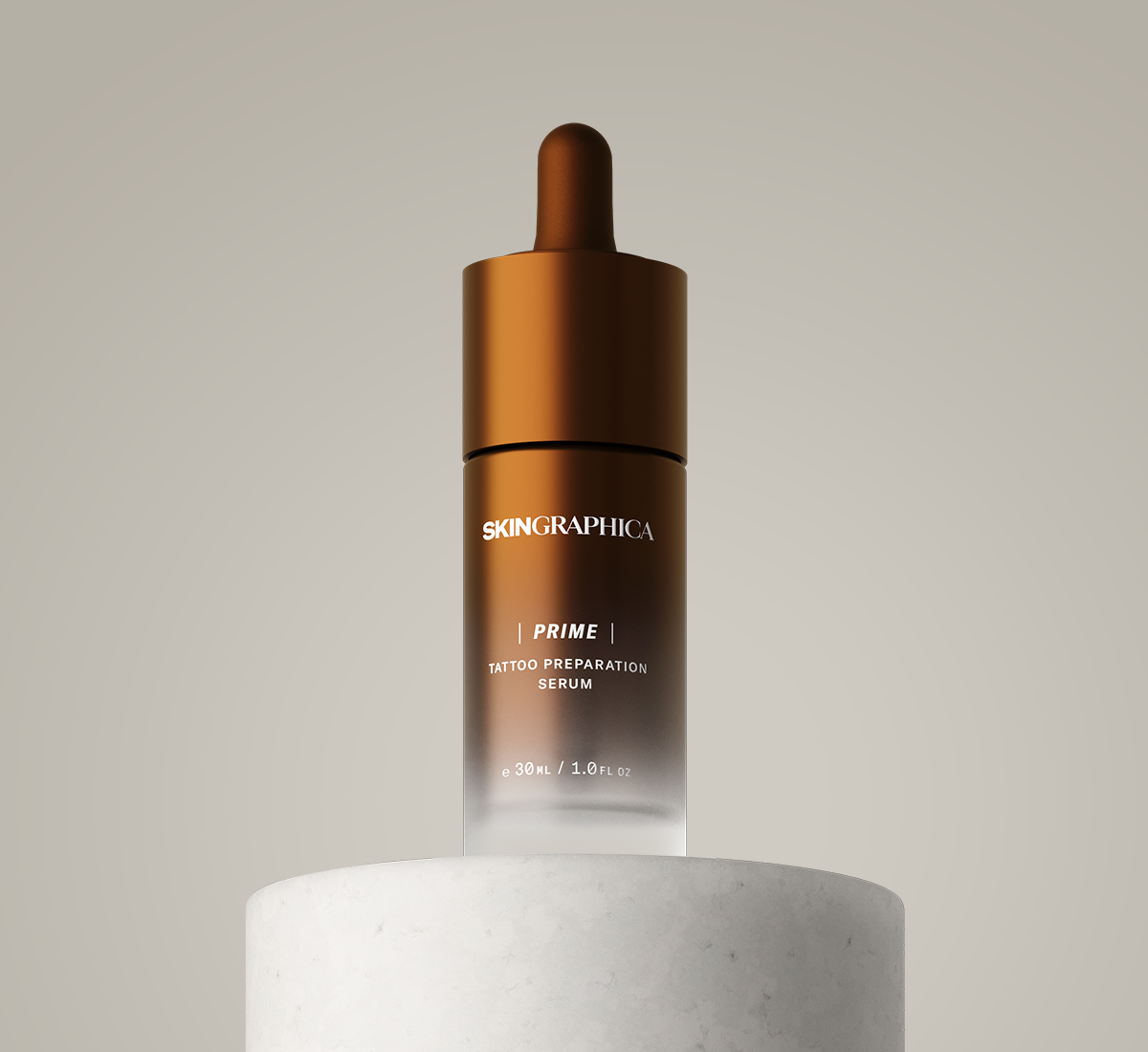
Our suggestion
Use PRIME to help condition and hydrate the skin, supporting a smooth, balanced surface ahead of tattooing.
Stage 02
Recover
Aftercare and Healing
-
What Happens
Tattooing creates an open wound. Your body responds by clotting, forming scabs, and regenerating skin. The way you care for your tattoo in these first weeks determines how much pigment “locks in” permanently.
-
How to Prepare
Covering.
If applied, keep it on as directed (usually 24–48 hours). Remove gently under lukewarm water.Gentle Cleansing.
Wash with fragrance-free soap. Pat dry.Moisturise Lightly.
Apply a thin layer of tattoo-safe recovery product, never smother.No Picking or Scratching.
Flakes must fall away naturally.No Swimming or Saunas.
Pools, hot tubs, and open water expose healing skin to bacteria.
-
Common Mistakes
- Picking at scabs.
- Swimming too early.
- Suffocating the tattoo with petroleum-heavy balms.
- Wearing tight clothes over fresh ink.
-
Expert Advice
Think of recovery as “ink setting into the skin.” Everything you do in these two weeks affects how much pigment stays and how sharp your lines look long term.
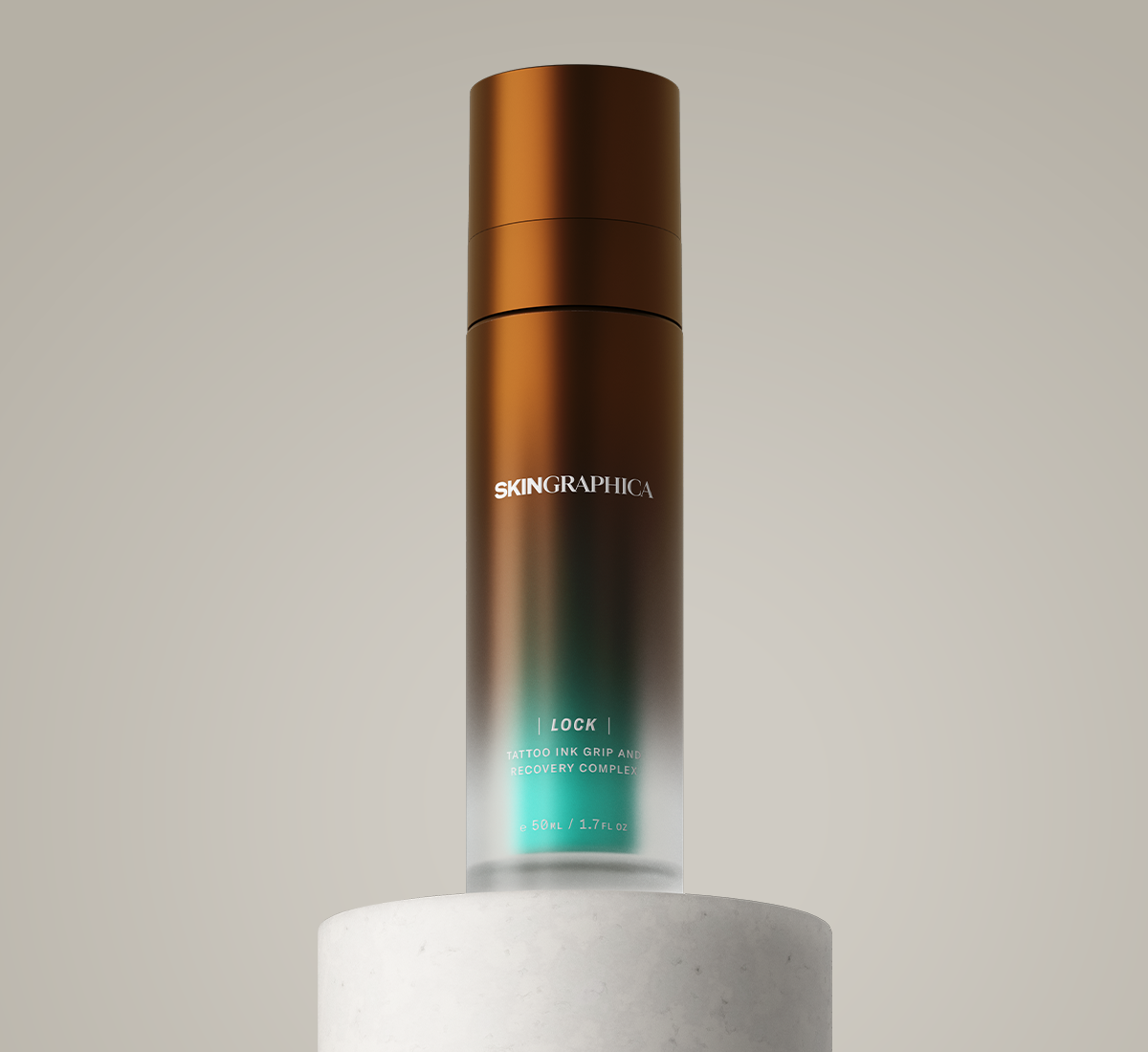
Our suggestion
Use LOCK to help maintain hydration, comfort, and surface balance through recovery.
Stage 03
Protect
Daily Defence
-
What Happens
Once healed, your tattoo enters the maintenance stage. Sunlight, pollution, friction, and even screens all cause tattoos to fade and blur over time. The most damaging factor by far is UV radiation.
-
How to Prepare
Use Sunscreen Daily.
Apply broad-spectrum SPF, even on cloudy days.Hydrate Skin.
Moisturised skin reflects light better, making tattoos appear sharper.Cover Up Outdoors.
Hats and clothing add extra defence.Avoid Tanning Beds.
They are one of the fastest ways to ruin tattoos.
-
Common Mistakes
- Only using sunscreen on “beach days.”
- Believing tattoos under clothing don’t need protection.
- Forgetting ongoing care after the first month.
-
Expert Advice
Tattoos don’t fade overnight, but years of neglect add up. Daily protection is the difference between ink that still looks brilliant at 50, and ink that looks blurred at 25.
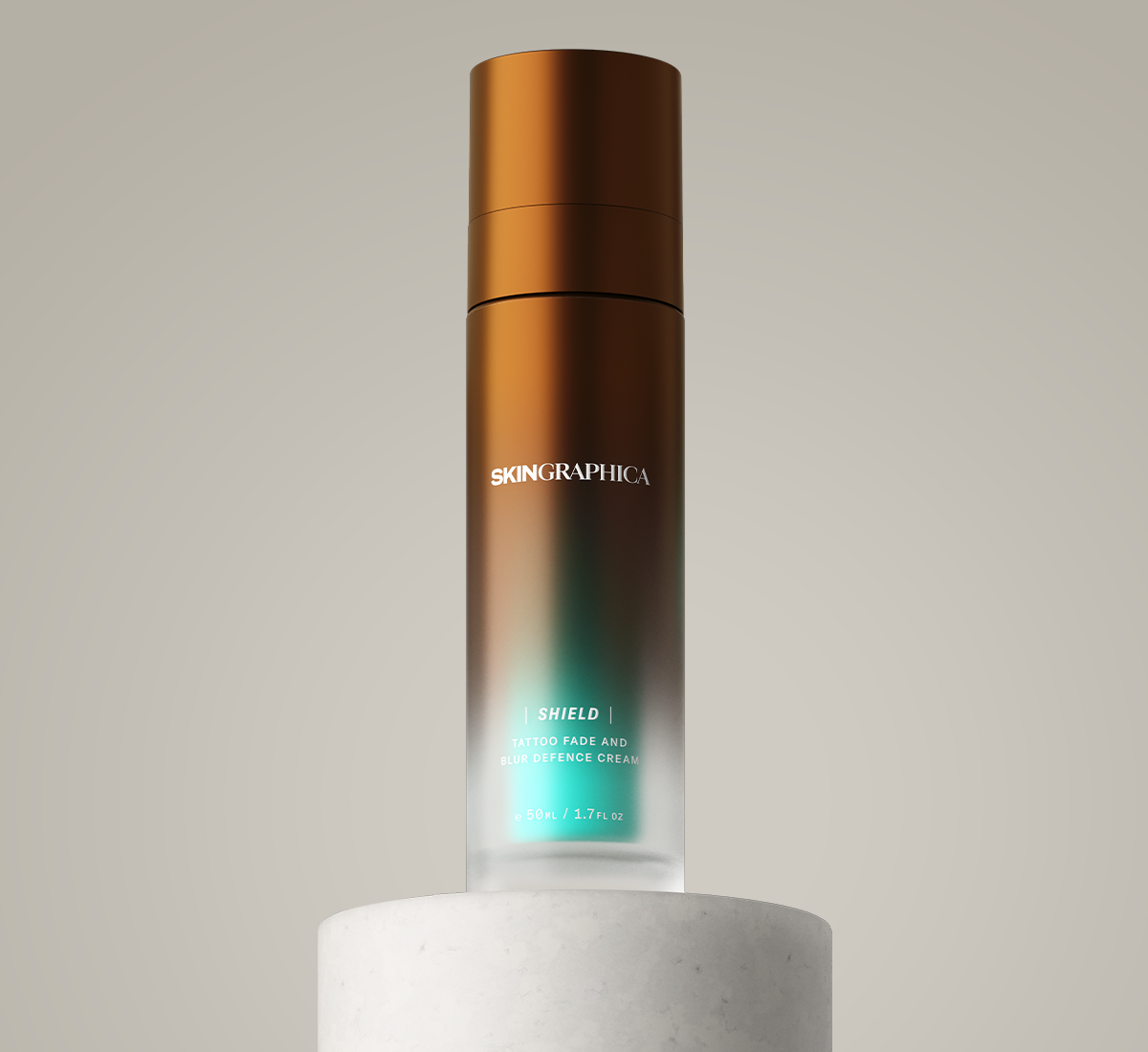
Our suggestion
Use SHIELD to help defend tattooed skin from UV, blue light, and environmental stressors.
Stage 04
Restore
Renewal and Revitalisation
-
What Happens
Over years, tattoos inevitably soften. Skin renews itself constantly, and time takes a toll on vibrancy. But modern skincare can help refresh older tattoos, restoring definition and brightness.
-
How to Prepare
Consistent Skincare.
Use tattoo-specific renewal treatments designed to refresh appearance.Hydration is Key.
Well-hydrated skin reflects and diffuses light, making tattoos look sharper.Healthy Lifestyle.
Balanced diet, exercise, and sun avoidance all slow ageing.
-
Common Mistakes
- Believing aftercare ends once healed.
- Using harsh scrubs or random “brightening” products not safe for tattoos.
- Neglecting older tattoos until it’s too late.
-
Expert Advice
Think of restoration as “maintenance for your masterpiece.” Tattoos don’t need to dull with age if you treat your skin like part of the art.
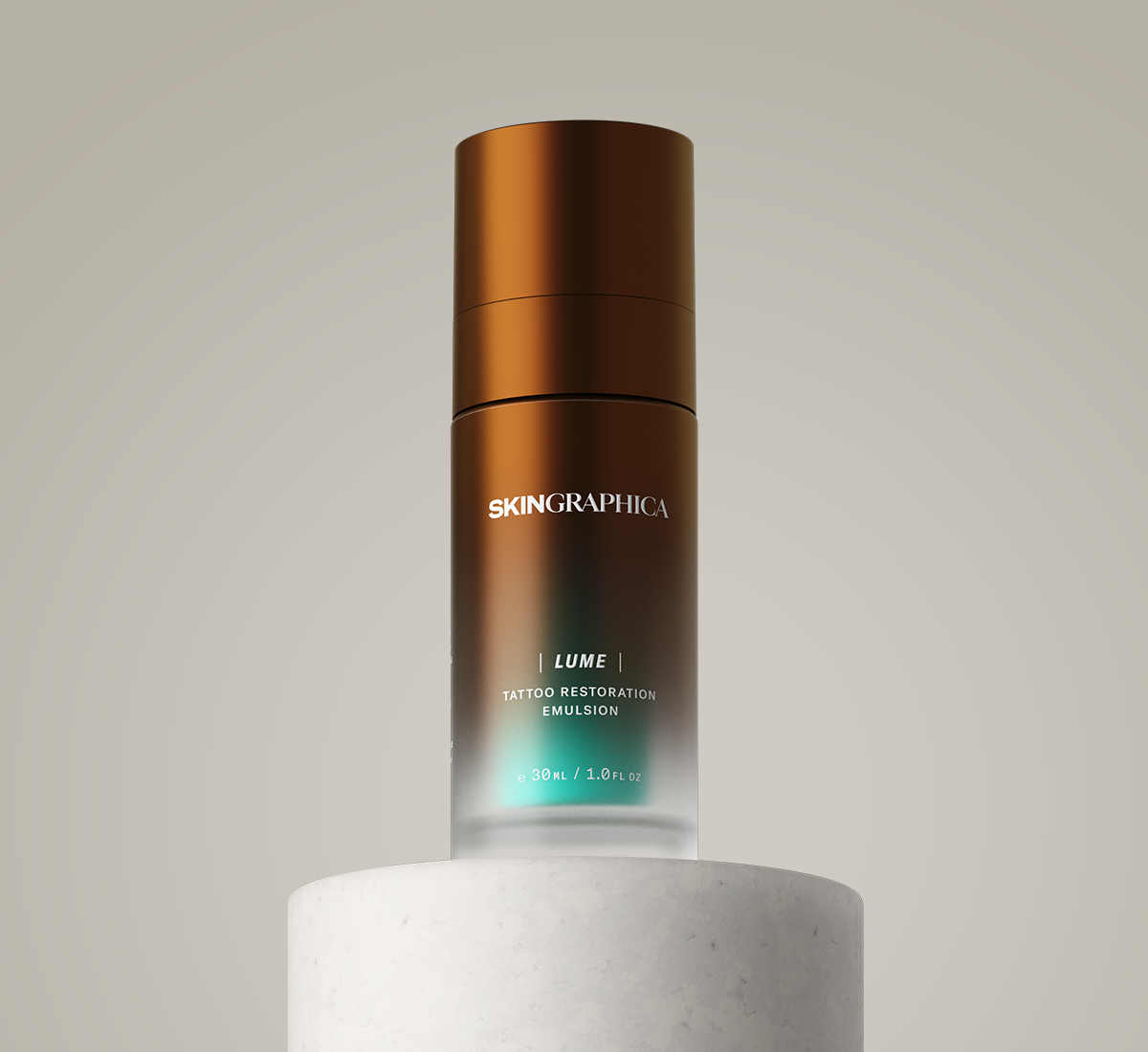
Our suggestion
Use LUME to help refresh the appearance of aged or faded tattoos, providing an instant boost in vibrancy while supporting gradual visible improvement with continued use.
The complete system.
Copyright & Usage
© SKINGRAPHICA Pty Ltd, 2025. All rights reserved.
This Tattoo Care Guide is published under a Creative Commons Attribution-NonCommercial-NoDerivatives 4.0 International License (CC BY-NC-ND 4.0).
You are free to share this guide for non-commercial purposes, provided it is credited to SKINGRAPHICA and left unaltered. No commercial use, remixing, or derivative works are permitted without prior written consent.
For permissions or enquiries, contact policies@skingraphica.com

